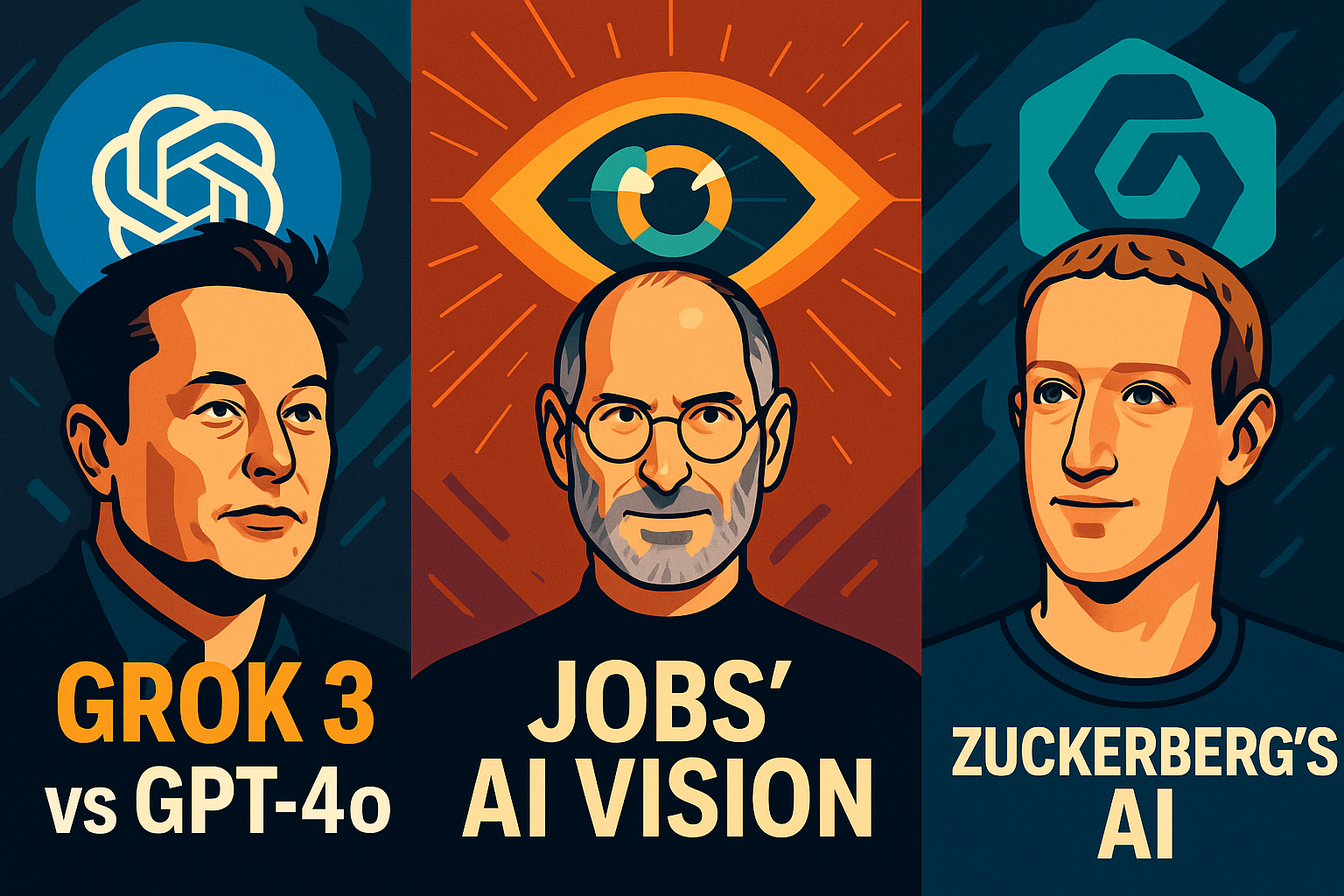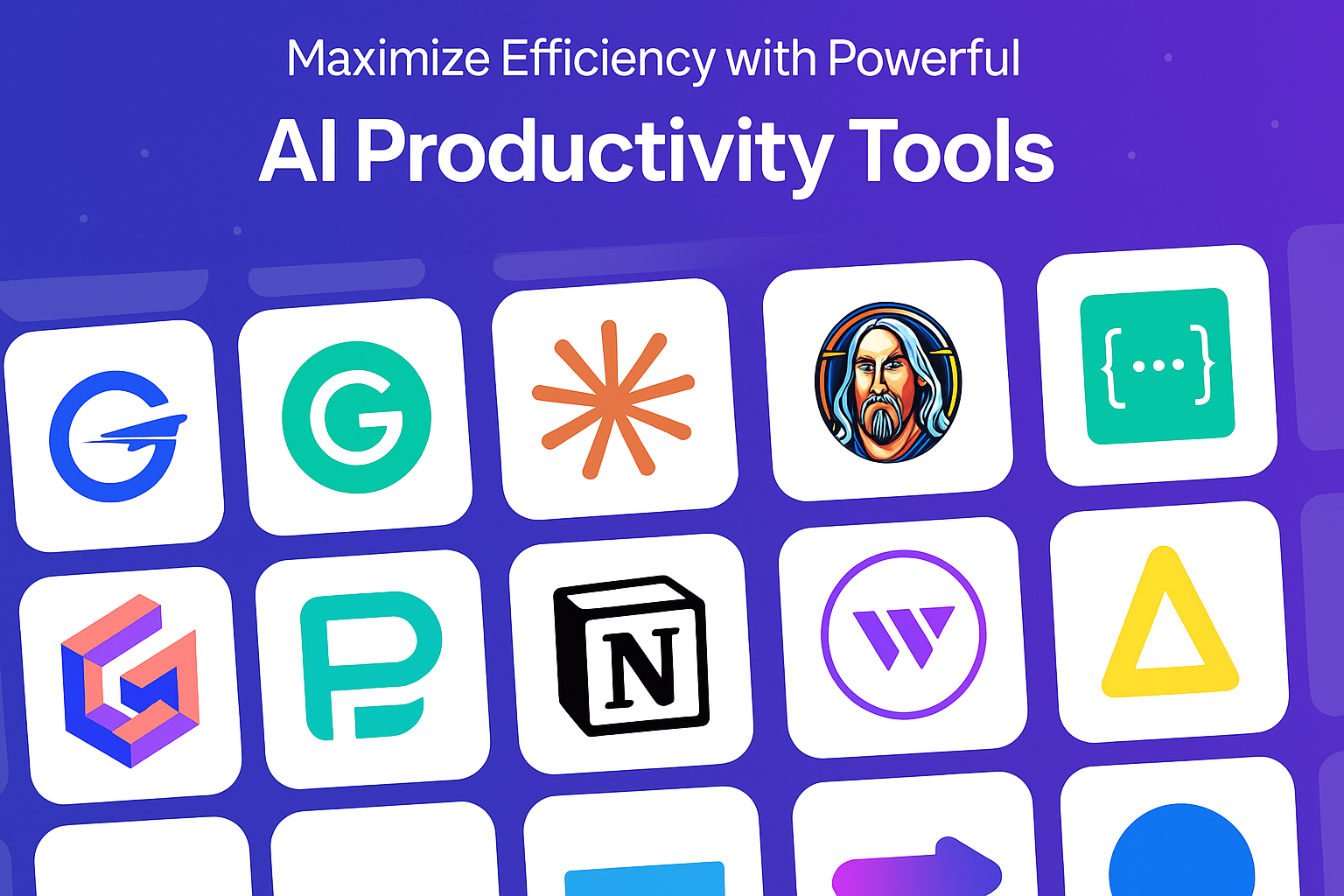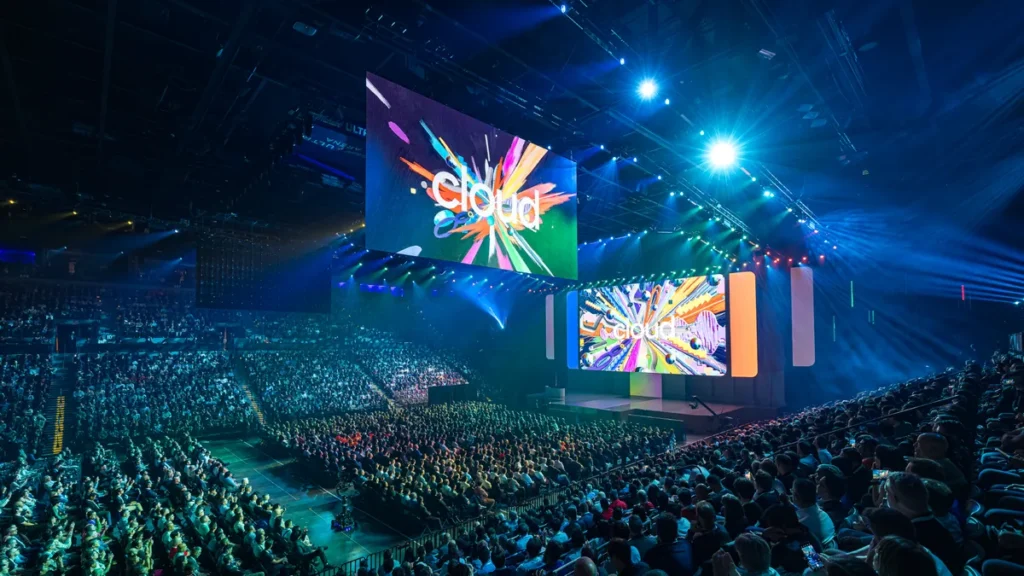Grok 3 vs GPT-4o, Jobs’ AI Vision & Zuckerberg’s AI
As artificial intelligence continues to dominate both headlines and research labs, three major developments are generating global buzz: Steve Jobs’ surprisingly accurate 1983 predictions on AI Elon Musk’s Grok 3 model challenging the dominance of GPT-4o and Gemini Experimental training of an AI model on Mark Zuckerberg’s Facebook posts This article by Aimystry dives into each, while linking you to the best resources, papers, and tools that define the AI landscape in 2025. Steve Jobs’ Vision of AI from 1983: Decades Ahead of Its Time In 1983, at the International Design Conference in Aspen, Steve Jobs described computers that would become “bicycles for the mind,” foreseeing intelligent assistants capable of understanding human context and responding through natural conversation. That vision mirrors what we now call augmented intelligence — systems that extend human capabilities, like: Apple’s Siri Amazon Alexa OpenAI’s ChatGPT Elon Musk’s Grok 3 vs GPT-4o and Gemini: A New AI Contender Grok 3, developed by xAI, is Elon Musk’s flagship AI model and a direct competitor to GPT-4o, Google Gemini, and Claude. With its integration into X (formerly Twitter), Grok 3 stands out for its contextual intelligence and distinct personality. A review by Fireship highlights Grok 3’s capabilities in code generation, reasoning, and engaging conversation. AI Tools Fighting Deepfakes and AI Art DejAIvu: Real-Time AI Image Detection DejAIvu is a tool for detecting AI-generated imagery using saliency heatmaps and ONNX-based inference, making it ideal for journalists and content platforms. VocalCrypt: Preventing Deepfake Voice Cloning VocalCrypt disrupts voice cloning attempts by embedding inaudible distortions that confuse AI training systems, protecting real voices from replication. Voice Cloning in AI: How Synthetic Voices are Created According to Deepgram, voice cloning systems use techniques like timbre modeling, pitch contour mapping, and adversarial training to replicate human voices with high fidelity. 7 Essential arXiv Papers for Mastering LLMs These seven papers from arXiv offer foundational understanding for developers and researchers working on LLMs: Attention Is All You Need Scaling Laws for Neural Language Models Language Models are Few-Shot Learners Instruction Tuning with Human Feedback Emergent Abilities of LLMs Chain-of-Thought Prompting Retrieval-Augmented Generation AI Trained on Zuckerberg’s Facebook Posts: An Ethical Grey Zone Researchers experimented with training an AI model using Mark Zuckerberg’s public Facebook posts. The model developed a conversational and socially aware tone — but also triggered major questions about data ethics, ownership, and bias. Related: Meta AI Research GPT-4o and the Full Glass of Wine Problem Despite its multimodal strengths, GPT-4o faltered when asked to draw a full glass of wine, exposing the ongoing limitations in spatial logic and visual reasoning. Final Thoughts: Ethics, Innovation, and the Future of AI From Steve Jobs’ early insights to Grok 3’s AI potential and the ethics of social media data training, the future of AI is evolving rapidly. Aimystry remains committed to tracking these developments and offering critical analysis for developers, researchers, and strategists shaping AI’s future.
Grok 3 vs GPT-4o, Jobs’ AI Vision & Zuckerberg’s AI Read More »



